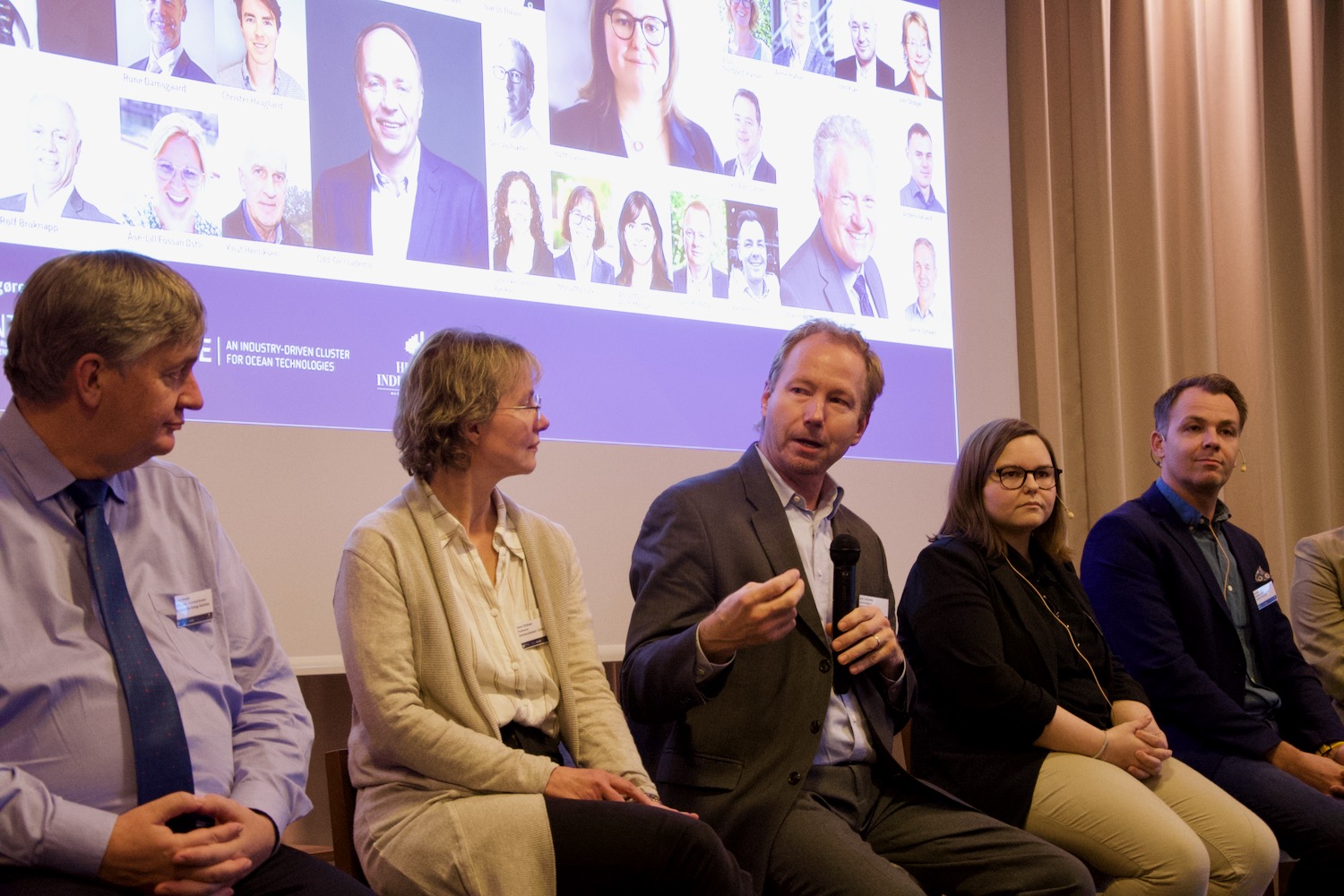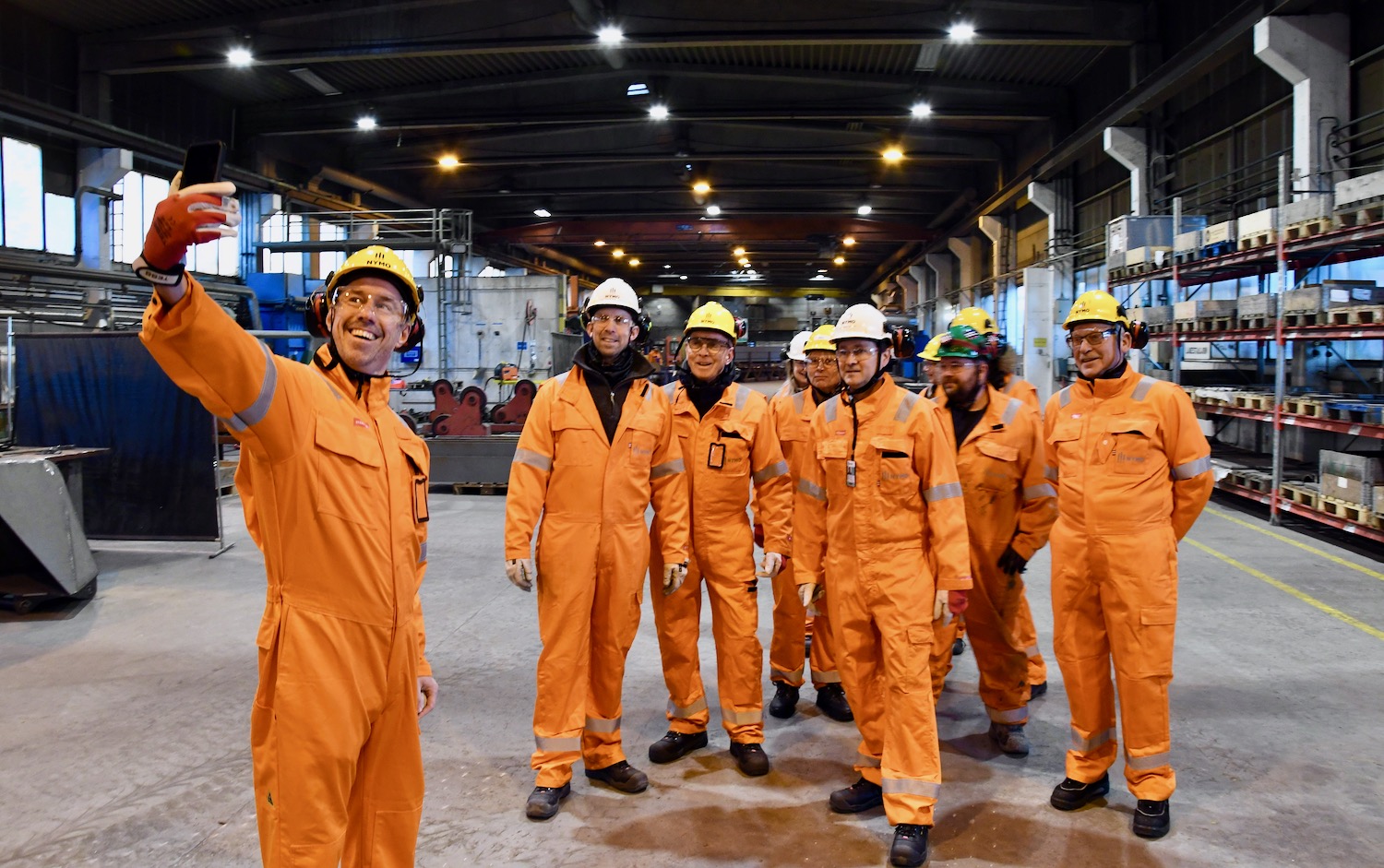A large field of speakers, comprising 28 academic, industrial, and governmental leaders from Norway and abroad, took the stage to share insights and help advance this industry sector.
“The state of carbon capture and storage has never been better. In between lots of challenges and risks, there is reason to smile,” says Geir Vollsæter, head of an expert group for carbon capture and storage in the governmental program Prosess21.
MORE: Pictures from the event
Two years ago, the expert group submitted a report which concluded that there are several industrial sectors in which carbon capture is the only way to significantly reduce process-related emissions that cannot be reduced by means of energy efficiencies or transition to renewable sources of energy. Thus, carbon capture and storage is an absolute necessity for the Norwegian process industry to reach its target to reduce greenhouse emissions to zero by 2050.

AIR PRODUCTS
For carbon capture, there are several technologies available or under development. Air Products in Kristiansand has entered a long-term program to decarbonize the waste-to-energy plant Returkraft.
“We are successfully capturing approximately 1 million metric tons of CO2 annually at Port Arthur, Texas. We continue to see significant opportunities for carbon capture technologies and look forward to developing the Returkraft CO2 capture pilot project,” says Rune Damsgaard, Marketing Director at Air Products Norway.
Two more CCS projects at Norwegian waste-to-energy plants, Rakkestad (Carbon Centric) and Klemetsrud (Celsio), also took the stage at Fevik.

CRYOGENIC CARBON CAPTURE
Larry Baxter, Professor at Brigham Young University, presented cryogenic carbon capture, an innovative CO2 capture technology that has the potential to reduce carbon emissions from fossil-fueled power plants by 95-99%.
“It can do so at half the cost and energy of current state-of-the-art carbon capture processes, while also removing other pollutants, such as SOX and NOX. Cryogenic carbon capture is also the easiest retrofit carbon capture technology,” says Baxter.
STORE OR USE?
Having captured CO2, the question remains: What to do with it?
Whether CO2 is suitable for storage only, or if it can also be used in new value chains, is a question with different answers. Some argued that storage is the only solution, and that using CO2 in new products only postpones the inevitable emission of CO2. Others say CO2 can be used to produce environmentally friendly fuels and construction materials.
Professor Baxter argued that in the short term, there is not enough usage for CO2.
“It is naïve to think that we will find places to use the quantities of CO2 that we need to use to make any impact on the climate crisis,” said Baxter.
FAST-TRACK TO STORAGE
Kenneth Juul, co-founder of Carbon Centric views carbon capture usage as a fast-track to carbon capture storage.
“Benefits of an CCU-first-CCS-second-approach is reduced costs, technology development, a maturing supplier value chain, and faster build-up of capture capacity,” said Juul.
Unni Olsbye, Professor at the University of Oslo explained that the EU Commission has strategies for CO2 utilization, which include several demonstration installations producing CO2 based fuels, chemicals, and materials by 2030.
“35 CO2 usage projects are already running within the EU,” said Olsbye.
The European Union’s ambitious goals present business opportunities for Norway, as we have 50 per cent of the total European storage capacity,” said Johan Hustad, Director at NTNU Energi.
Anders Valland at SINTEF Ocean presented R&D initiatives for carbon capture and storage on ships. If some challenges are resolved, there is potential for significant reductions of CO2 emissions to help meet the world’s emission reduction goals.

MULTIPLE TECHNOLOGIES
Anne Marit Post-Melbye at the environmental organization Zero concluded that we need all kinds of climate-friendly solutions, including more industrial carbon capture and a lot more CO2 storage.
Andreas Bjelland Eriksen, State Secretary at the Norwegian Ministry of Petroleum and Energy, agreed.
“We need to utilize all technologies and CCUS is essential. Also in Norway, which has close to 100 per cent renewable energy production, we need CCUS to reach our climate targets”, said Eriksen.
He reminded everyone that Norway has stored CO2 securely underneath the ocean since 1996.
“Expanding on this, Norway has decided to spend NOK 25 billion to build a complete Norwegian value chain for CCUS. This has drawn international attention. The European Commission is soon coming to Norway to learn more about what we are doing within the field of CCUS,” said Eriksen.
STRONGER THAN 15 YEARS AGO
Summing up the positive sentiment at the CCUS event, Mona Mølnvik at the Norwegian CCS Research Center said:
“We have had years of ups and downs. In 2006, ideas and plans were plentiful. In 2012, no-one talked about CCS. Today, we are moving faster than ever. Our understanding is a lot stronger than 15 years ago.”
The CCUS event at Fevik was hosted by the Norwegian Academy of Science and Technology, GCE NODE, and Herøya Industry Park – and moderated by Camilla Brox, Network Leader at CCUS Norway.




